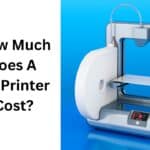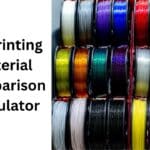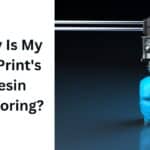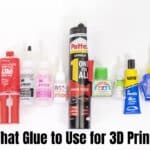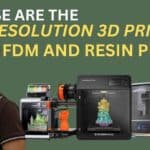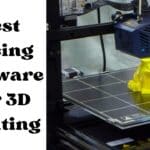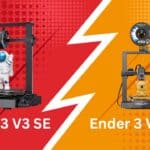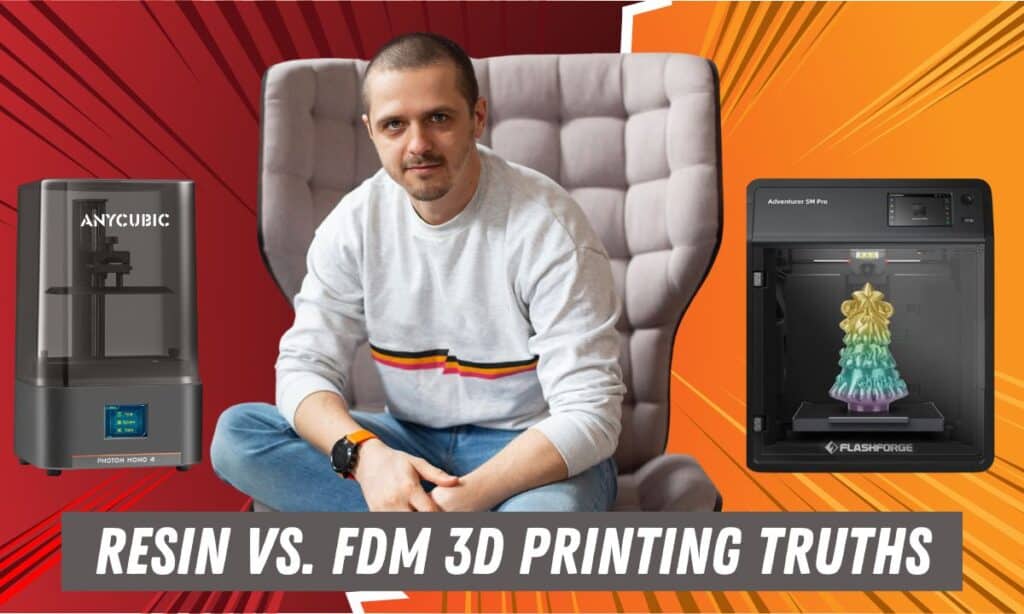
Resin 3D printing shines for small, detailed objects, while FDM excels for large, functional, cost-effective prints—choose based on your project’s needs.
Three-dimensional (3D) printing has revolutionized object production, offering various techniques, with Resin and Fused Deposition Modeling (FDM) emerging as the most commonly used methods. Both have unique advantages and disadvantages, making them suitable for different applications. Whether you’re a hobbyist, engineer, or designer, understanding the strengths and limitations of each technology is crucial for choosing the right 3D printing method for your needs.
Affiliate Disclosure
We participate in Amazon affiliate programs, earning fees from qualifying purchases via links at no extra cost to you. It’s how we keep this blog rolling and my 3D printers buzzing with fresh filament for reviews like this one!
Upgrade your setup with the ANYCUBIC Photon Mono 4 10K Resin 3D Printer ($249) on Amazon now!
Resin vs FDM 3D Printing
What is Resin 3D Printing?
Resin 3D printing, also known as stereolithography (SLA) or digital light processing (DLP), uses a liquid photopolymer resin that is cured (hardened) by a light source. This technique creates high-quality, detailed prints ideal for small or intricate objects. The process involves using a laser or projector to cure the resin in precise locations, layer by layer, until the object is complete.
Advantages of Resin 3D Printing
- High Level of Detail: Resin 3D printing produces incredibly detailed prints with smooth surfaces and intricate features. The precise control of the light source and the ability to generate thinner layers result in less “stair-stepping” and smoother finishes compared to FDM prints.
- Material Variety: A wide selection of resins is available, including flexible, clear, and high-temperature-resistant options, making it versatile for different applications.
- Minimal Post-Processing: Resin prints require minimal post-processing because they lack visible layers, reducing part costs and improving accuracy.
Disadvantages of Resin 3D Printing
- Limited Print Size: The printer’s build platform restricts the size of resin prints, making it less suitable for large objects.
- Messy and Toxic: Resin 3D printing can be messy, as liquid resin can spill and stain surfaces. The chemicals in the resin are toxic and require careful handling, proper ventilation, and protective equipment.
- Longer Print Times: Resin 3D printing can take longer than FDM printing because each layer must be cured individually.
Related: ANYCUBIC Photon Mono 4: Is This the Ultimate 10K Resin 3D Printer for $169?
What is Fused Deposition Modeling (FDM) 3D Printing?
Fused Deposition Modeling (FDM) 3D printing is the most common type, using a thermoplastic filament that is melted and extruded through a nozzle, layer by layer, until the object is complete. FDM is versatile and cost-effective, making it ideal for creating large, functional objects.
Advantages of FDM 3D Printing
- Large Print Size: FDM 3D printing can create larger objects than resin 3D printing, with a scalable design that results in a low cost-to-size ratio.
- Filament Variety: Many filament types are available, including PLA, ABS, PETG, and TPU, each offering unique properties like strength, flexibility, or heat resistance.
- Fast Print Times: FDM 3D printing can create objects quickly since multiple layers can be printed at once.
Disadvantages of FDM 3D Printing
- Visible Layers: FDM prints have visible layers, which may require post-processing to smooth out. The relatively thick layer height means FDM is not ideal for parts with small details.
- Limited Detail: FDM prints have less detail and precision than resin prints, making them less suitable for intricate designs.
- Warping and Cracking: FDM prints can be prone to warping or cracking, especially when printing large objects, due to thermal expansion and contraction of the material.
- Surface Quality: The surface of FDM-printed objects often has obvious layer patterns, requiring post-processing such as grinding and polishing to improve the appearance.
- Material Performance Limitations: The high-temperature resistance and mechanical strength of FDM materials may not meet some high-demand industrial applications.
Applications of Each Technology
Resin 3D Printing
Resin 3D printing is often preferred for parts with intricate designs, small or miniature parts, and those with fine features. Example applications include:
- Jewelry: High-detail designs and smooth finishes.
- Dental Models: Precision and accuracy for medical applications.
- Miniatures: Ideal for tabletop gaming and collectibles.
FDM 3D Printing
FDM is better suited for larger, functional parts, prototypes, and cost-effective models. Example applications include:
- Prototyping: Quick and affordable production of functional prototypes.
- Tooling: Durable and customizable tools for manufacturing.
- End-Use Parts: Strong and functional components for mechanical applications.
Key Factors to Consider
When choosing between resin and FDM 3D printing, consider the following factors:
- Desired Level of Detail: If the project requires high detail and smooth surfaces, resin 3D printing is the better choice.
- Size of the Object: For larger objects, FDM 3D printing is more suitable due to the limitations of resin printer build platforms.
- Material Properties: Evaluate the required material properties, such as temperature resistance and mechanical strength, to determine the appropriate material for the application.
- Cost: FDM 3D printing is generally more cost-effective for larger objects, while resin printing can be more cost-effective for small, detailed parts.
- Post-Processing: Resin prints typically require less post-processing than FDM prints, which may need sanding, painting, or smoothing.
Recent Advances in 3D Printing
Recent advancements aim to address some limitations of both FDM and resin technologies:
For FDM Printing
- Improved Materials: New composite filaments enhance strength and durability.
- Advanced Software: Enhanced slicing software optimizes printing parameters and reduces warping.
For Resin Printing
- Larger Build Volumes: Manufacturers are producing larger resin printers, expanding the size capabilities.
- Safer Resins: Development of less toxic and more environmentally friendly resins is underway.
Resin vs FDM 3D Printing Comparison Table
Here’s a comparison table summarizing the key differences between Resin and FDM 3D Printing for easy reference:
| Aspect | Resin 3D Printing | FDM 3D Printing |
|---|---|---|
| How It Works | Uses UV light to cure liquid resin layer by layer. | Melts and extrudes thermoplastic filament layer by layer. |
| Best For | High-detail, small, and intricate models (e.g., miniatures, jewelry, dental models). | Large, functional parts and prototypes (e.g., tools, mechanical parts). |
| Detail & Precision | Extremely high detail and smooth surfaces. | Visible layer lines; less detail compared to resin. |
| Material Options | Wide variety of resins (e.g., standard, flexible, high-temperature, castable). | Wide variety of filaments (e.g., PLA, ABS, PETG, TPU). |
| Print Size | Limited by smaller build volumes. | Larger build volumes, suitable for bigger objects. |
| Cost | Higher initial cost for printers and materials; resin is more expensive per liter. | Lower initial cost; filaments like PLA are affordable. |
| Post-Processing | Requires washing in alcohol and UV curing; minimal sanding needed. | Requires sanding, painting, or smoothing to improve surface finish. |
| Safety | Toxic resin requires gloves, ventilation, and proper disposal. | Generally safer; no toxic chemicals, but some filaments emit fumes when heated. |
| Print Speed | Slower due to layer-by-layer curing process. | Faster for larger objects; multiple layers can be printed simultaneously. |
| Durability | Parts are more brittle and less durable. | Parts are stronger and more functional, suitable for mechanical applications. |
| Environmental Impact | Resin is toxic and requires careful disposal; higher environmental risk. | More eco-friendly, especially with biodegradable filaments like PLA. |
| Recent Advancements | Larger build volumes, less toxic resins, and faster curing technologies. | Improved materials (e.g., carbon fiber-infused filaments), better slicing software. |
Conclusion
Resin and FDM 3D printing have distinct strengths and weaknesses, and the choice depends on the application. Resin 3D printing excels in creating highly detailed, small objects, while FDM 3D printing is better for producing large, functional objects quickly and cost-effectively. Both methods offer unique benefits, and the decision hinges on the specific needs of the project.
By understanding the pros and cons of each technology, you can make an informed decision and unlock the full potential of 3D printing for your projects.
Whether you’re a beginner or an experienced user, there’s a 3D printing method that’s perfect for your needs.
Upgrade your setup with the ANYCUBIC Photon Mono 4 10K Resin 3D Printer ($249) on Amazon now!
Frequently Asked Questions (FAQs)
What are the most common applications for resin 3D printing
Jewelry Making: Intricate designs for rings and necklaces.
Dentistry: Dental crowns, bridges, and orthodontic devices.
Medical Applications: Surgical models and implants.
Prototyping: High-detail design iterations.
Education: Detailed biological and engineering models.
Art and Design: Sculptures and functional art.
Manufacturing: High-quality end-use parts.
Aerospace and Automotive: Lightweight, complex components.
How does the cost of resin 3D printing compare to FDM 3D printing?
Material Costs: Resin is generally more expensive ($50-$150 per liter) than filament ($20-$50 per kilogram).
Printer Costs: Entry-level FDM printers start around $200; resin printers start around $300 but can be pricier for high-resolution models.
Maintenance Costs: FDM has lower operating costs, while resin requires additional consumables for post-processing.
What safety precautions should be taken when working with resin 3D printing?
Wear Gloves: To protect skin from irritation.
Ensure Ventilation: Work in a well-ventilated area to avoid harmful fumes.
Maintain Cleanliness: Keep the workspace organized and dispose of waste properly.
Follow Guidelines: Adhere to manufacturer instructions for handling resin.
Are there any new advancements in FDM 3D printing that address its limitations?
Yes, advancements include:
Improved Materials: New composite filaments enhance strength and durability.
Advanced Software: Optimized printing parameters reduce warping and improve print quality.
How do the environmental impacts of resin and FDM 3D printing differ?
Resin printing typically involves toxic chemicals and requires careful disposal. In contrast, FDM uses thermoplastic filaments, which can be more environmentally friendly if recycled properly. However, both methods have environmental considerations that need to be addressed.


